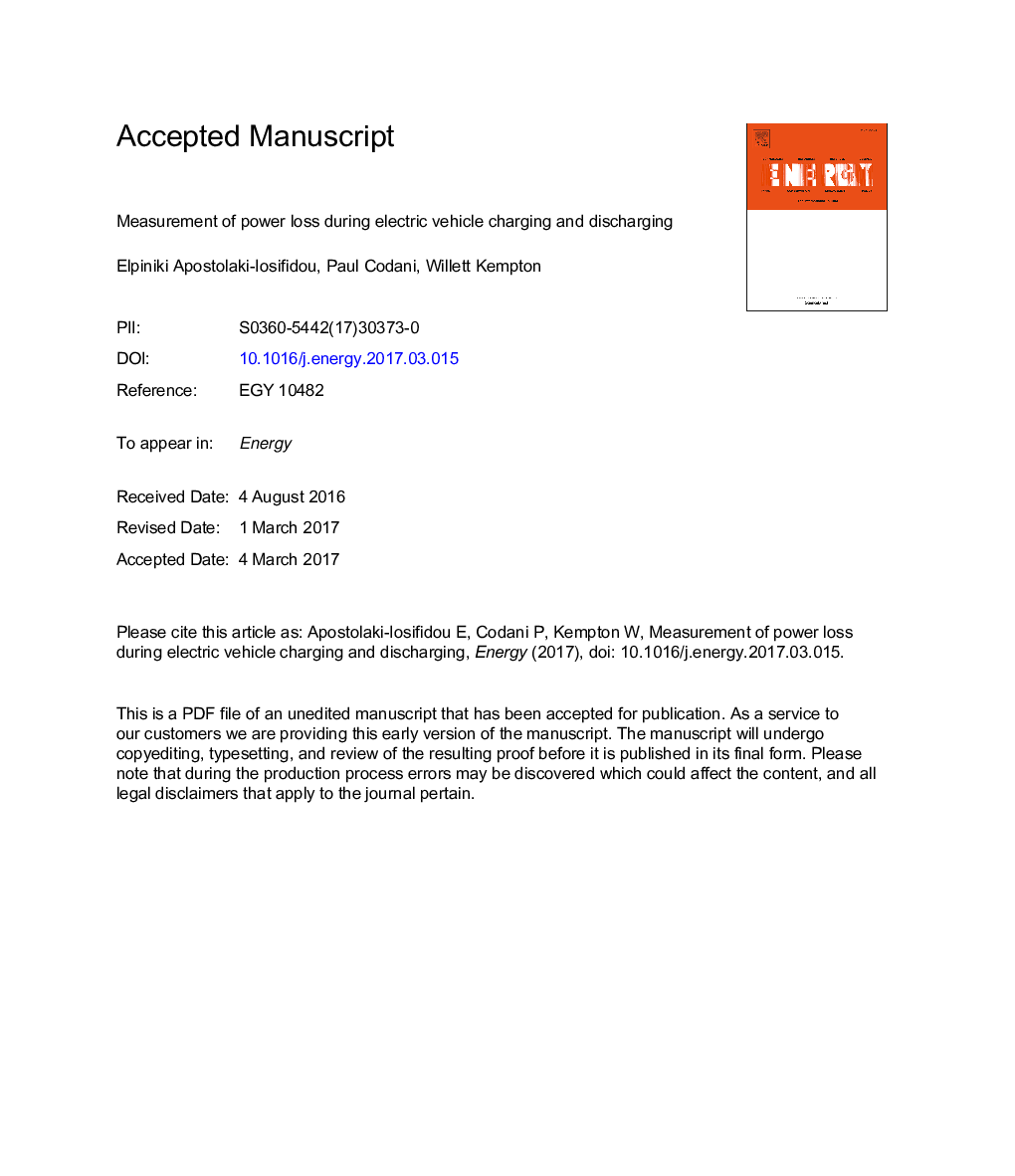| Article ID | Journal | Published Year | Pages | File Type |
|---|---|---|---|---|
| 5476846 | Energy | 2017 | 37 Pages |
Abstract
When charging or discharging electric vehicles, power losses occur in the vehicle and the building systems supplying the vehicle. A new use case for electric vehicles, grid services, has recently begun commercial operation. Vehicles capable of such application, called Grid-Integrated Vehicles, may have use cases with charging and discharging summing up to much more energy transfer than the charging only use case, so measuring and reducing electrical losses is even more important. In this study, the authors experimentally measure and analyze the power losses of a Grid-Integrated Vehicle system, via detailed measurement of the building circuits, power feed components, and of sample electric vehicle components. Under the conditions studied, measured total one-way losses vary from 12% to 36%, so understanding loss factors is important to efficient design and use. Predominant losses occur in the power electronics used for AC-DC conversion. The electronics efficiency is lowest at low power transfer and low state-of-charge, and is lower during discharging than charging. Based on these findings, two engineering design approaches are proposed. First, optimal sizing of charging stations is analyzed. Second, a dispatch algorithm for grid services operating at highest efficiency is developed, showing 7.0% to 9.7% less losses than the simple equal dispatch algorithm.
Related Topics
Physical Sciences and Engineering
Energy
Energy (General)
Authors
Elpiniki Apostolaki-Iosifidou, Paul Codani, Willett Kempton,
